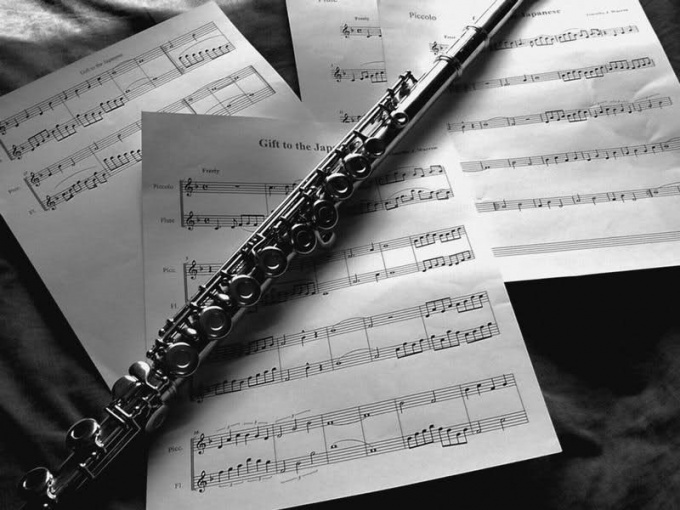Where to start
To start your training better with recorders, and then go to the development of the orchestral transverse flute will be easy. A recorder is a wooden or plastic wind instrument, whose range is only 1.5 octaves. It looks like a small flute with 7 holes along the hull and one hole on the inner side, in which the game opens and closes with fingertips. The transverse flute is of a different range, material and form. Breathing and fingering mastered on the same principle.
Breath
So the first thing you must master is breathing. Any flute, including the cross, it is necessary to breathe correctly. The strength and method of air supply to the tool determines the clarity and duration of the sounds. Exhale the abdomen or chest, the air flow should go smoothly, without jerks. For starters, you can practice breathing using only the mouthpiece of the flute. When you hear that sound smooth, not "jumping" and "whistles", then breathing you understand.
For transverse flute requires a very strong deep breathing that for the unprepared person becomes a serious problem. This is one of the main reasons for the priority of learning to play the recorder, as it does not require a strong breath and at the same time trains the lungs.
Fingering
To learn fingering of the recorders simply. In order to take note, you need to close the finger holes of the instrument. To get the next note – "re", the last hole. Note "mi" sounds when you open the last two holes. Thus, by opening one hole, you can play a scale in C major. The flute fingering is a bit more complicated, but the principle is the same as the recorders. Therefore, knowing the location of the notes on the recorder, you will learn their location on an orchestral instrument.
Extraction of sounds
One of the most difficult stages of learning is the retrieval of sounds. In order to get a really good sound, enough to learn two things. The first is the right of the closing holes. Between your fingers and the holes should be no gap for any air, otherwise you will hear a rattle and a whistle. The second thing is the power of air supply. Depending on how hard you "blow" the air in a flute, sheet music can be pure and no. From the transverse flute from the feed force of the air on the octave in which you play. Therefore, before playing any tunes and "fill the hand" on the fingering, install itself on your computer a special tuner for wind instruments and train each note to sound cleanly and smoothly. Gradually begin to play scales and simple pieces of music.

